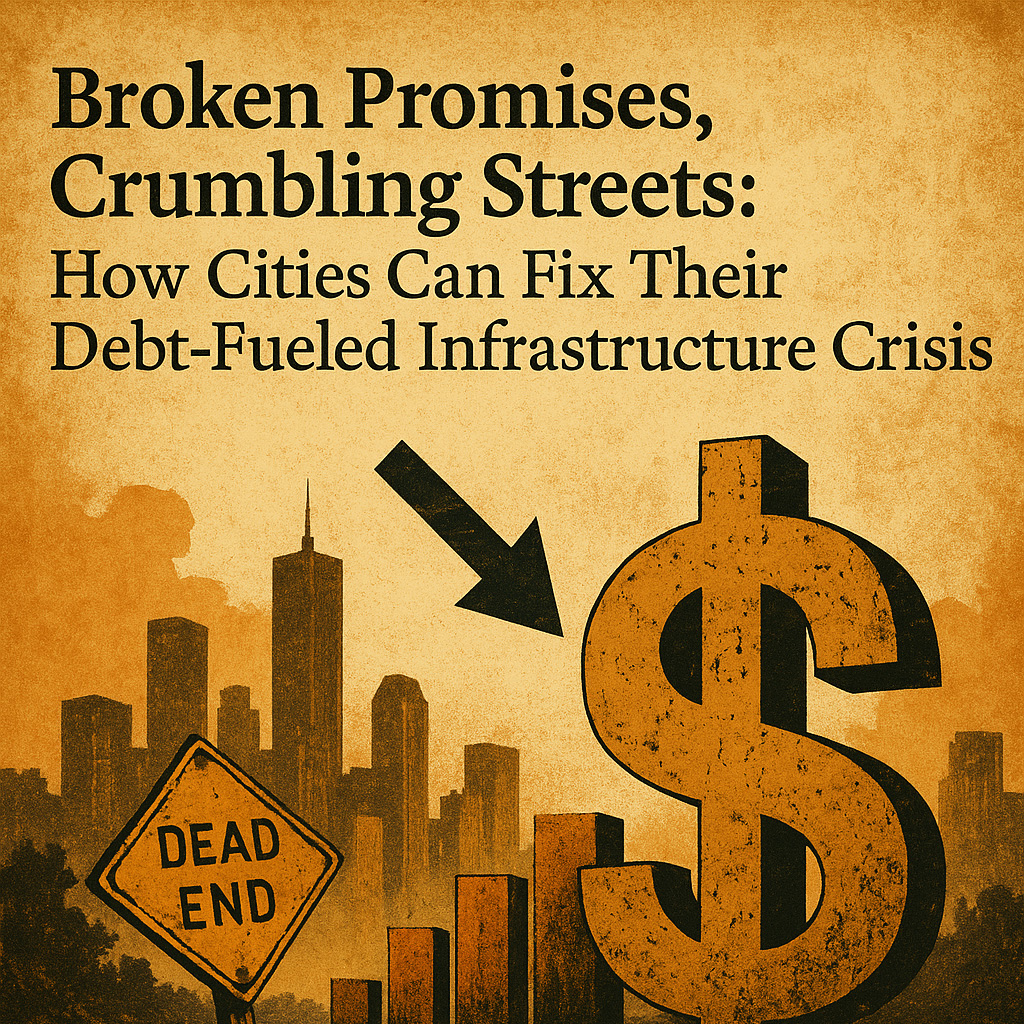“No man is an island, entire of itself; every man is a piece of the continent, a part of the main.” -Ernest Hemingway
Understanding CIP Bond Projects and Using Tolls for Repayment
Capital Improvement Program (CIP) bond projects are critical mechanisms for financing large-scale public infrastructure developments, such as roads, bridges, schools, and water treatment facilities. These projects are essential for maintaining and improving the quality of life in communities. One innovative way to fund these projects is through the issuance of bonds, with tolls serving as a repayment method. This blog will explore the fundamentals of CIP bond projects, the use of tolls for repayment, their advantages, concerns, and important considerations for stakeholders.
Fundamentals of CIP Bond Projects
CIP bond projects are typically financed through the issuance of municipal bonds. Municipal bonds are debt securities issued by local government entities to finance public projects. These bonds are attractive to investors because they often provide tax-exempt income. The process of issuing bonds for CIP projects involves several key steps:
- Project Identification and Planning: The first step is identifying and planning the infrastructure project. This involves assessing community needs, estimating costs, and determining the project’s feasibility.
- Approval and Authorization: Once a project is planned, it must be approved by the relevant governing bodies, such as city councils or boards of education. This step often involves public hearings and input from constituents.
- Bond Issuance: After approval, the government entity issues bonds to raise the necessary funds. These bonds are sold to investors, who provide the upfront capital in exchange for periodic interest payments and the return of principal at maturity.
- Project Implementation: With the funds secured, the project is implemented. This phase includes design, construction, and project management.
- Repayment: Over time, the government entity repays the bondholders using revenue generated from various sources, such as taxes, fees, or tolls.
Using Tolls for Repayment
One method of repaying bonds issued for CIP projects is through tolls. Tolling involves charging users a fee to access a specific piece of infrastructure, such as a road, bridge, or tunnel. The revenue generated from these tolls is used to repay the bondholders. Here are some key points to consider when using tolls for repayment:
Advantages of Using Tolls
- User Pays Principle: Tolls adhere to the “user pays” principle, where those who directly benefit from the infrastructure contribute to its cost. This can be seen as a fair way to fund projects, as it ensures that the burden of payment falls on those who use the infrastructure.
- Dedicated Revenue Stream: Tolls provide a dedicated and predictable revenue stream that can be used exclusively for repaying the bonds. This can make the bonds more attractive to investors, potentially lowering the cost of borrowing.
- Encourages Efficient Use: By placing a cost on the use of infrastructure, tolls can encourage more efficient use and reduce congestion. Users may seek alternative routes or modes of transportation, leading to better traffic management.
- Supplemental Funding: Tolls can serve as a supplemental funding source, reducing the reliance on general tax revenues and spreading the financial burden more equitably among users.
Concerns with Using Tolls
- Equity Issues: Tolls can raise equity concerns, as they may disproportionately affect lower-income individuals who rely on the tolled infrastructure for daily commutes. Policymakers need to consider ways to mitigate this impact, such as offering discounts or subsidies for low-income users.
- Economic Impact: High toll rates can have negative economic impacts, particularly on businesses that rely on transportation for their operations. This can lead to increased costs for goods and services, which may be passed on to consumers.
- Traffic Diversion: Tolls can lead to traffic diversion, where drivers seek alternative routes to avoid paying the toll. This can result in increased congestion on non-tolled roads and potentially shift the problem rather than solve it.
- Implementation and Maintenance Costs: Establishing and maintaining toll collection systems can be expensive. There are costs associated with the installation of tolling infrastructure, technology, and ongoing maintenance and operation.
Important Considerations for Stakeholders
When considering the use of tolls to repay CIP bonds, stakeholders should keep the following points in mind:
- Public Acceptance and Communication: Gaining public acceptance for tolls is crucial. Transparent communication about the benefits of the project, how toll revenue will be used, and the long-term advantages can help build public support.
- Equity Measures: To address equity concerns, consider implementing measures such as tiered toll rates, exemptions for certain groups, or providing alternative non-tolled routes.
- Technology and Efficiency: Investing in modern toll collection technologies, such as electronic toll collection (ETC) systems, can improve efficiency and reduce operational costs. These systems can also enhance user convenience and reduce traffic delays.
- Economic Analysis: Conduct thorough economic analysis to understand the potential impacts of tolls on local businesses and commuters. This analysis can help design tolling strategies that minimize negative economic effects.
- Legal and Regulatory Considerations: Ensure compliance with all legal and regulatory requirements related to tolling and bond issuance. This includes obtaining necessary approvals, adhering to environmental regulations, and ensuring transparency in financial reporting.
- Long-Term Planning: Consider the long-term sustainability of toll revenue. As infrastructure ages and user patterns change, toll rates and collection methods may need to be adjusted to ensure ongoing viability.
Conclusion
Using tolls to repay CIP bonds offers a practical and efficient way to fund essential infrastructure projects. It aligns with the user pays principle, provides a dedicated revenue stream, and encourages efficient use of infrastructure. However, it also raises concerns related to equity, economic impact, and traffic diversion. By addressing these concerns through thoughtful planning, transparent communication, and equitable measures, stakeholders can leverage tolls to successfully finance and repay CIP bond projects, ultimately benefiting the community and enhancing public infrastructure.
At Front Line Advisory Group, we manage Capital Improvement programs to ensure they are completed on time and within budget. We make sure every dollar is used wisely to improve our community. For more information or to start your project, contact us at info@frontlineadvisorygroup.com.













